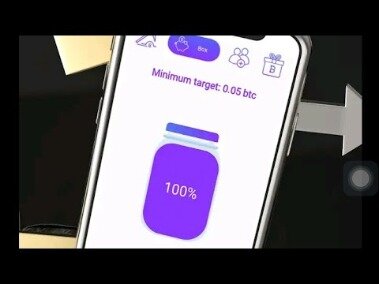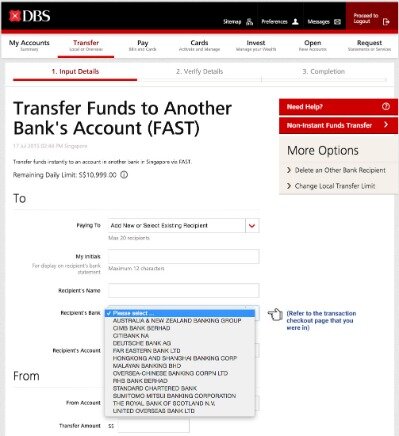
Otherwise, the sky-high risks can outweigh the hefty rewards of trading options. When long-term investors want to invest in a stock, they usually purchase shares at the current market price. But there’s a way to buy shares without paying that market price by using stock options. Understanding and knowing how to buy options can give you another tool for your investing toolbox. In a short put, the trader will write an option betting on a price increase and sell it to buyers. In this case, the maximum gains for a trader are limited to the premium amount collected.
Depending on the situation, there is usually an option scenario appropriate for an investor’s goal. A popular example would be using options as an https://cryptonews.wiki/types-of-marketing-top-10-types-of-marketing/ effective hedge against a declining stock market to limit downside losses. Hedging with options is meant to reduce risk at a reasonable cost.
SHORTING STOCKS
In this case, the cost of the option position will be much lower at only $200. The trader’s potential loss from a long call is limited to the premium paid. Potential profit is unlimited because the option payoff will increase along with the underlying asset price until expiration, and there is theoretically no limit to how high it can go. Options are essentially leveraged https://crypto-trading.info/bitcoin-price-plunges/ instruments in that they allow traders to amplify the potential upside benefit by using smaller amounts than would otherwise be required if trading the underlying asset itself. So, instead of laying out $10,000 to buy 100 shares of a $100 stock, you could hypothetically spend, say, $2,000 on a call contract with a strike price 10% higher than the current market price.
Powerball jackpot climbs to $1 billion: Here’s how much the cash … – WKYC.com
Powerball jackpot climbs to $1 billion: Here’s how much the cash ….
Posted: Wed, 19 Jul 2023 21:46:00 GMT [source]
If you buy an options contract, it grants you the right but not the obligation to buy or sell an underlying asset at a set price on or before a certain date. On most U.S. exchanges, a stock option contract is the option to buy or sell 100 shares; that’s why you must multiply the contract premium by 100 to get the total amount you’ll have to spend to buy the call. This is because uncertainty pushes the odds of an outcome higher. If the volatility of the underlying asset increases, larger price swings increase the possibility of substantial moves both up and down.
Decide How Many Contracts
A trader who expects a stock’s price to decrease can sell the stock short or instead sell, or “write”, a call. The trader selling a call has an obligation to sell the stock to the call buyer at a fixed price (“strike price”). If the seller does not own the stock when the option is exercised, they are obligated to purchase the stock in the market at the prevailing market price. If the stock price decreases, the seller of the call (call writer) makes a profit in the amount of the premium. If the stock price increases over the strike price by more than the amount of the premium, the seller loses money, with the potential loss being unlimited. The right to sell the underlying asset is secured through paying a premium to hold the theoretical equivalent of 100 short shares of stock below the put strike for a limited amount of time.
But by the end of this section, you’ll be equipped with all you need to get started. Immersing yourself in the world of stock options trading and learning as much as possible. In this complete guide, we’re going to cover everything you need to know about how to buy stock options and earn consistent profits by incorporating these into your investment strategy. You could also take advantage of the fact that out-of-the-money options aren’t typically exercised and sell them to anyone looking to bet on the movement of a security.
If the stock finishes above the strike price, the owner must sell the stock to the call buyer at the strike price. A covered call strategy involves buying 100 shares of the underlying asset and selling a call option against those shares. When the trader sells the call, the option’s premium is collected, thus lowering the cost basis on the shares and providing some downside protection. In return, by selling the option, the trader is agreeing to sell shares of the underlying at the option’s strike price, thereby capping the trader’s upside potential. One well-known strategy is the covered call, in which a trader buys a stock (or holds a previously-purchased long stock position), and sells a call.
- When you open a new, eligible Fidelity account with $50 or more.
- Trading options has a much stronger upside than trading stocks, but it takes a lot of know-how and strategy to minimize the risk.
- ITM options are more expensive than OTM options since intrinsic value is purchased up front, and that intrinsic value is retained if the stock doesn’t move.
- Investing involves risk including the potential loss of principal.
- Since options are financial instruments similar to bonds or stocks, they can be traded in the same manner.
Yes, you can buy a put option without owning the physical underlying stock. Traders that use put options in this manner are typically speculating on a bearish stock price movement prior to expiration. Options allow traders to “rent” 100 shares of long or short stock, depending on whether they’re using calls or puts, for a limited amount of time. This is how the premium paid up front can be so low relative to buying/shorting shares outright in the market. The two parties in an options contract have opposite market assumptions – so when one profits, the other incurs a loss. A put option is a derivative contract that lets the owner sell 100 shares of a particular underlying asset at a predetermined price (known as the strike price) on or before the expiration date.
Duration of Time You Plan on Being in the Call Option Trade
American options can be exercised anytime before expiration, but European options can be exercised only at the stated expiry date. Options can also be distinguished by when their expiration date falls. Sets of options now expire weekly on each Friday, at the end of the month, or even on a daily basis. Index and ETF options also sometimes offer quarterly expiries.
This material is not intended as a recommendation, offer or solicitation for the purchase or sale of any security or investment strategy. Merrill offers a broad range of brokerage, investment advisory (including financial planning) and other services. Additional information is available in our Client Relationship Summary (Form CRS) (PDF).
Best brokers for options trading in July 2023
This way, you may earn some income by collecting the premium paid for those options. Put options can be bought through brokerages like TradeStation, TD Ameritrade, Robinhood and more. Since options are financial instruments similar https://bitcoin-mining.biz/buy-crypto-voucher-online-2020/ to bonds or stocks, they can be traded in the same manner. However, the process of buying put options is quite different, since they are a contract on underlying securities, rather than buying the securities outright.
If the option’s expiration date passes without the option being exercised, the option expires, and the holder forfeits the premium paid to the issuer. In any case, the premium is income to the issuer, and normally a capital loss to the option holder. Many traders use short put options contracts to obtain 100 shares of stock at a lower cost basis than the market is offering right now. Another very common strategy is the protective put, in which a trader buys a stock (or holds a previously-purchased long stock position), and buys a put. This strategy acts as an insurance when investing on the underlying stock, hedging the investor’s potential losses, but also shrinking an otherwise larger profit, if just purchasing the stock without the put.

If you’re a few months into a 6-month contract and the price has barely budged, you are in a tough situation. Fortunately, you’re only out the cash you paid for the contract. “Unforeseen overnight price gaps caused by news catalysts like earnings announcements involve the highest risk,” he continues. “In addition, investors must be aware that the buyer of the call option has the right to demand the underlying stock at the strike price from the option seller prior to expiration.” Buying put options can be a simple and less risky way to trade options.
Options trading can be speculative in nature and carry a substantial risk of loss. In real life, options almost always trade at some level above their intrinsic value, because the probability of an event occurring is never absolutely zero, even if it is highly unlikely. Options are another asset class, and when used correctly, they offer many advantages that trading stocks and ETFs alone cannot.

Contract that gives you the right to sell shares at a stated price before the contract expires. Options trading is when you buy or sell an underlying asset at a pre-negotiated price by a certain future date. Options are complex financial instruments which can yield big profits — or big losses. Here’s what you need to know about how to trade options cautiously. The valuation itself combines a model of the behavior (“process”) of the underlying price with a mathematical method which returns the premium as a function of the assumed behavior.
Because the right to exercise early has some value, an American option typically carries a higher premium than an otherwise identical European option. This is because the early exercise feature is desirable and commands a premium. The potential homebuyer would benefit from the option of buying or not. Imagine they can buy a call option from the developer to buy the home at say $400,000 at any point in the next three years.
- But by the end of this in-depth discussion, you’ll feel confident in taking your next steps towards options trading.
- These two varieties can be mixed and matched in endless combinations ranging from simple, including covered calls, to complex, such as iron condors.
- The distinction between American and European options has nothing to do with geography, only with early exercise.
- Should market prices be unfavorable for option holders, they will let the option expire worthless and not exercise this right, ensuring that potential losses are not higher than the premium.
- The only difference is, if the stock trades above the strike price at expiration where the trade begins, there won’t be real intrinsic value for the put owner.
Our dedicated Trader Service Team includes many former floor traders and Futures Specialists who share your passion for options trading. Market price returns are based on the prior-day closing market price, which is the average of the midpoint bid-ask prices at 4 p.m. Market price returns do not represent the returns an investor would receive if shares were traded at other times. You’ll then use your brokerage’s trading platform to buy the options contracts you’ve chosen. Go through any resources available on your broker’s website to ensure you’re doing everything right. If the asset performs as you expected, you keep the premium and that helps to offset the loss in value of the asset you own.
Options trading entails significant risk and is not appropriate for all investors. Before trading options, please read Characteristics and Risks of Standardized Options. Supporting documentation for any claims, if applicable, will be furnished upon request. With the knowledge of how to buy options, you can consider implementing other options trading strategies. Buying call options is essential to a number of other more advanced strategies, such as spreads, straddles, and condors. There’s an important point to note about the price you pay for options.